· 16 min read
The Fighting Game Scene On Mobile – An Interview With Shoryuken

Edward Price
Community Manager at GameAnalytics
After 2 years at Shoryuken and attendance at countless fighting game tournaments, I spoke to Fighting Game Community expert Keegan Spindler about the difficulties of adapting the genre to mobile, the fine line microtransactions have to take to make competition viable, and his tips on how being open with the community can help it grow around you.
Can you give us a little background on your role and what it is you do now?
I was the Features Editor for Shoryuken. About 12 months ago we looked at our numbers and realised that by staying as a news network, we weren’t keeping up with things like social media. So my job role evolved as we realised the need to create higher quality, bespoke long-form work around fighting games and the community. I’ve stepped down a bit as I’m about to become a father, but I’m still at Shoryuken.
You play a lot of fighting games, how experienced would you say you are for fighting games on mobile?
I play quite a lot, from things like the King of Fighters and several Street Fighter ports for mobile and handhelds. The mobile version of Street Fighter 4 that is out at the moment is the moment that appeared on the Nintendo 3DS that appeared back at its launch. The way you have to adapt fighting games to take advantage of different mediums is very interesting in terms of the design choices that it forces developers to make.
What would you say, in your experience as a journalist, are the keys to making a fighting game enjoyable for mobile phones?
In my opinion, and this is very much from a place of competitive fighting games and entering tournaments, but what I enjoy isn’t the button mashing, and what I see from a lot of people who try to create fighting games on mobile platforms is that you end up with a lot of screen mashing, or swiping across the screen to pull off moves. What I think is much more engaging is a sense of strategy and responsiveness, it’s very frustrating to make the right choice but the game going “oh, you didn’t swipe right”.
[bctt tweet=”What does the Fighting Game Community think about the genre’s success on mobile? Where will it go in future? Find out more: ” username=”GameAnalytics”]
Can you think of any examples where a game looked good on paper, but didn’t translate to a mobile phone?
There’s a new Street Fighter game out at the moment, which as mentioned is a 3DS port, but it’s had issues translating over one of the characters – Guile. He’s a character essentially designed to have inputs where you hold one direction, then you move across to the other direction to get his special moves. To mitigate having to do that on the mobile they’ve allowed you to press a button to fire off his special moves without having to charge, which instantly made him impossibly oppressive to fight, and no fun for anyone but the person playing Guile, as he can send off hundreds of Sonic Booms and then Flash Kick the moment you leave the floor.
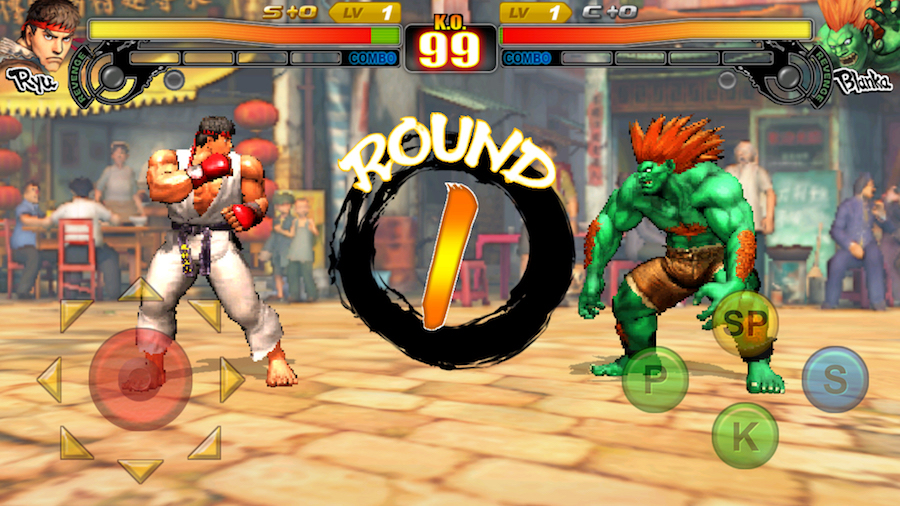
That’s a very zoomed-in example, but there are a couple of fighting games, or attempts at fighting games, that have riffed on Infinity Blade, the iOS weapons fighter where you dodge side-to-side and swipe across with your weapons. Because that’s iOS specific, there are plenty of Android versions that haven’t worked at all in terms of being responsive or interesting, and are lacklustre versions of a game they just can’t seem to get right.
One thing that fighting games on consoles are culpable of is that they tend to have a lot of monetization in terms of costume changes and new characters. In terms of mobile games and systems like loot boxes, do you think that the current system works, or should it be changed?
I’ll give you an example of a recent game that hasn’t quite got it right: Puzzle Fighter has recently had a mobile version, and we treat it as a fighting game even though it’s a bit unorthodox. They are pushing very hard for you to buy characters and buy progression, and the issue is that the balance is slightly wrong and pushed too much towards the monetisation side of things, which means that when you’re playing the game competitively – there’s a ranked mode so they’re very clearly trying to foster a sense of competition – but unless you put money in then you won’t be able to keep up with the people who have.
It’s created a very frustrating experience which I’m sure is part of the point, as they want to shift you towards the microtransations and encourage you to buy things to aid progression. There are some games that are guilty of that in the FGC (Fighting Game Community), that’s absolutely true, and they are struggling to find the sweet spot in terms of bringing a mobile style of monetisation over. There was recently an announcement for BlazBlue Cross Tag Battle, which is a terrible name to try and recall off the top of your head, and they announced the base roster of 16 characters, which is quite small for a game of that style, then announced a DLC set of another 16 characters directly after launch. As you imagine, that wasn’t met with a great deal of joy and happiness.
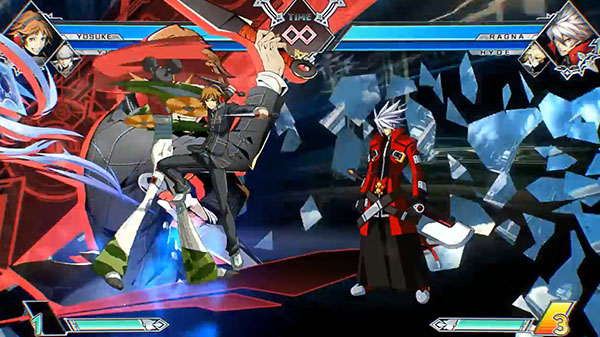
In the FGC in particular, there’s still that search for balance. People do like specific characters, and if they’re not in the game they won’t play it, and they’re happy to pay separately because it’s their character. In some games they really do do that right. There’s a recent King of Fighters – The Rhythm of Fighters – that’s a blend of fighting and rhythm game which has an energy system and characters you can buy or unlock, but the prices aren’t insane and the difficulty isn’t frustrating, it’s just a case of convenience – if you don’t have the time or patience to unlock them through the relatively difficult rhythm sections you can pay a premium – there’s the character you want, he’s right here, go right for it.
Ultimately, people are still trying things out and seeing how it goes and trying not to upset that balance.
You mentioned earlier that sometimes you’re playing games and the monetization can seem a bit much. What would you say as a journalist to developers specifically about steps they can take to encourage monetization without people feeling like they’re being preyed upon?
I am a big believer in convenience, and people are willing to pay for things to make their life easier, but I think the problem is when that is taken to its extreme, where it’s deliberately made frustrating or difficult in order to force you to spend money. I’ve seen that a lot of in some mobile games and a lot of console games as well, so it’s not something that is confined to one market – despite many people thinking so – but what’s important is giving people the option to have things they otherwise wouldn’t, and the option to show off a bit to their friends. I like DLC costumes and the ability to buy cosmetic items, but I don’t like options that can impact the core gameplay.
There’s a game called WWE Champions I’ve been playing way too much, but recently they’re added gear to certain characters that you can unlock, but the costumes do actually change the way the game can be played. For some costumes it’s not much, but some can actually affect the game significantly…
That’s a great example of walking the fine line between what’s perceived as pay-to-win and pay to look cool, and I don’t think in the fighting community it’s one that developers have necessarily gotten right, and have been guilty of at times.
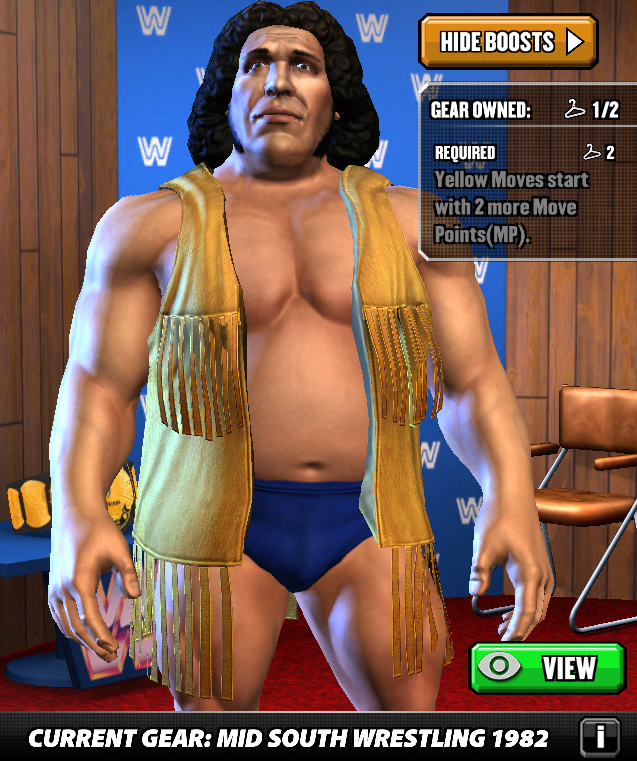
Are there any new trends that you’ve started noticing in terms of mobile fighters or other titles in the last year?
Apart from the stock standard imagery of a million men screaming on the App Store, I think the prevalence of free-to-play games has shot up, even in comparison to the past. I think there have been plenty of games I have bought that I enjoyed for not a huge amount of money, then bought the full version of the game. I find nowadays there aren’t many titles where that’s the case anymore.
I like having the ability to say “I’m really enjoying this, let’s pay to wipe out the adverts” for games like Stick Cricket and pay a couple of quid to get rid of adverts and smooth over some of the progression holes. But, more and more as I’ve gone looking for stuff like that am I finding it’s no longer there.
The core gameplay loops seem designed to lead you towards progression microtransactions, and that’s something I may have noticed more as a consumer more than someone who has worked in the industry, but it’s something that concerns both my consumer and journalist side!
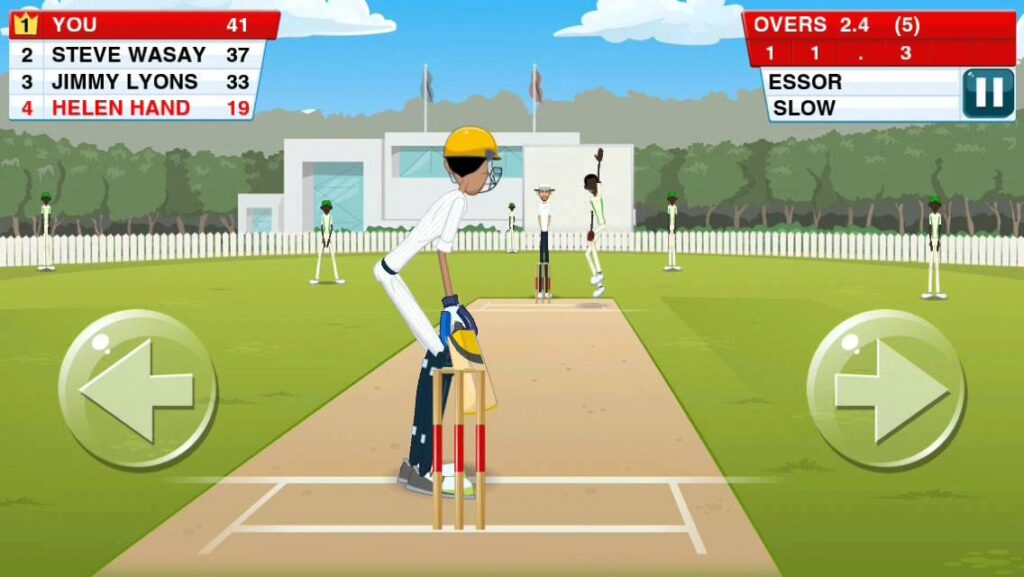
You mentioned earlier that fighting games need a level of precision, but as most smartphones are touch-screens, does that create a lack of precision, and does it prevent mobile fighters becoming a bigger genre in the long term?
I think it’s difficult for fighting games to translate generally – there’s no real way to say you want to do Ryu’s Tatsumaki by doing a quarter circle backwards and hitting the kick button. You can’t really do that on a phone, so what people have been looking into is the gesture style system, or making certain buttons on the screen tie into different actions, but it’s still a work in progress. I don’t see any reason why, in the long term, a developer couldn’t find the right formula to perfecting fighting games on mobile. Being able to take a finessed fighting experience about on my phone would be amazing.
At the same time, I think what developers could end up heading more towards are games more tangentially related versions of the fighting game experience. Divekick – which only requires two buttons – is something that definitely could pick up steam, or titles more like the King of Fighters rhythm game – it’s still a fighting game but the combat is handled through rhythm sections.
There’s also Puzzle Fighter as I mentioned, where it’s competitive and combative in its own way, while using the familiar characters in a differing style of gameplay. Realistically, that’s where developers may start to look. I don’t think the console gaming experience of fighters will ever fully translate 1:1 to mobile gaming, but I think the genre itself has definitely made the hop and will continue to grow. Infinity Blade takes a lot of core fighting game ideas and translates it into a single player experience very effectively, so I wouldn’t be surprised to see more developers take that route and run with it.
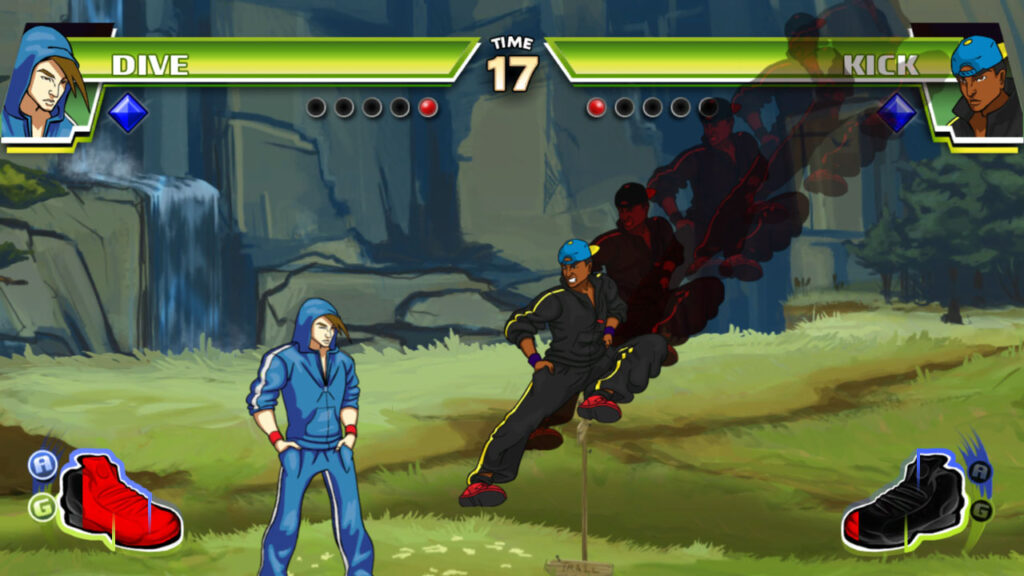
One big aspect of the fighting game community is, well, the community and the fact people can easily get together and compete. How do you find the social aspects for mobile fighting games, and could it be improved?
The difficulty in the social aspect is that, because the genre has been around for so long, a lot of the community is driven by means that aren’t necessarily online. People use social networks, but it’s a lot of in-person interaction and I’ve seen a lot of ranked systems pop up. Because a lot of mobile gaming is designed to be something less personally social – you have to think about how people will be able to play if their WiFi connection is inconsistent, or if they’re playing off an 3G connection instead of a 4G connection. It’s difficult to create a system that feels nice and responsive, but also foster a wide community with those discrepancies.
Clans and chatrooms are a great method to get around that, but it is tough for them to generate that same sensation as playing in front of someone one-on-one in terms of community. One of the key reasons fighting games don’t degenerate into mud-slinging more often is because you’re often next to that person, there’s less of a sensation that they’re a faceless person who keeps destroying you and spamming a taunt, but that’s less of the case by necessity on mobile. There are more games I’m noticing with more local play options, or ones that use something akin to the 3DS Streetpass functionality, and that could be successful, but that makes it harder to create a stronger community.
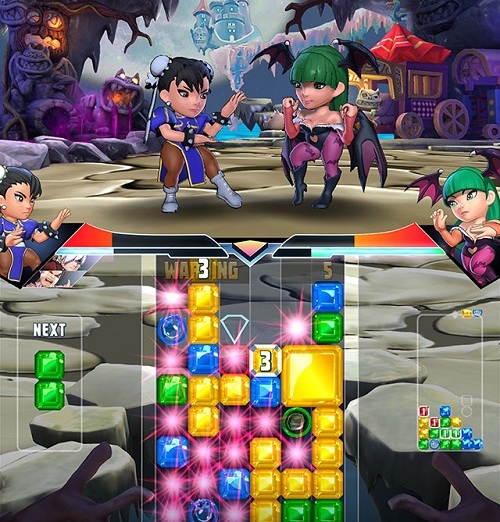
One game you mentioned to me in the past that has a good social structure is Star Wars Galaxy Of Heroes. Could you explain why that system is so good?
Star Wars Galaxy Of Heroes is designed around guilds that you can join, so at all times during gameplay and flicking through menus, there’s a guild chat that can open instantly. It won’t interrupt the game or force you to pause, but it’s a great system to keep eyes on conversations and get important updates. You also tend to have people online at all sorts of times, there are conversations generated naturally just because the guild chat system is there.
In fighting games, there’s a more solitary experience on mobile at the moment, so it’s harder to translate that sense of team spirit. I don’t think it’s impossible, but I could totally see the benefits of systems like that in fighting games like Puzzle Fighter and helping people find a sense of community that way. There are always people who represent teams and clans, and I don’t think it’s impossible to replicate that experience in the way that Star Wars Galaxy Of Heroes does it, but we need someone to try!
What sort of experiences are you looking forward to in future in the mobile fighting scene?
I am looking forward to more non-traditional fighting games. I think that’s where the niche is. Over the last couple of years, there’s a console game called Catherine that’s starting to get a big competitive following in the fighting game community even though it’s a story about relationships and the gameplay is a puzzler where you’re pushing blocks.
I think games like DiveKick are where the future is for the FGC on mobile, and it’s going to be really interesting to see how people build off of that, that’s what I’m looking forward to. I’m also deeply invested in how Puzzle Fighter evolves after its rocky launch, because many people in the community have given it a try and bounced off of it due to the monetization balance, but Capcom have committed to revisiting it, so I hope they can capture the imagination of the community again.

One more question: As a journalist embedded in the fighting game community, there are plenty of games vying for your attention, so how can fighting game developers grab it?
I think there are a couple of key, key features when it comes to attracting the FGC. One is a strong visual style – there have been some fighters that haven’t stepped up in that regard so they’ve fallen a bit flat.
Second is openess and honesty and good communication. The FGC has had to deal with the likes of old-school Capcom who would tell us nothing and leave us to figure out the intricacies ourselves, while on the other side the developers behind Killer Instinct were super open about everything being changed and why in every patch. We’ve seen a huge amount of increased engagement because of that increased communication between developer and buyer, and more anticipation as a result. If you’re trying to capture attention, being more specific will turn more people on than it will off – we’re very technically minded for the most part!
[bctt tweet=”Honesty and good communication with the Fighting Game Community is a great way for developers to capture their attention, and keep it. Find out more:” username=”GameAnalytics”]
So, a strong visual style and honest, clear communication about what is being done and why is brilliant. We’ve recently had that with a game called Absolver and it’s gone down really well, not necessarily as a competitive title, but as something people can enjoy casually when they’re not grinding through their games and preparing for tournaments. I see a lot of people picking it up because of the closeness to the FGC and the openness with which the developers have spoken. If you’re trying to appeal to the fighting game community, it’s a great way to catch our eye and earn our dedication.
Thank you very much for taking the time to talk with us!
Keegan Spindler can be found at Shoryuken (@shoryukendotcom), and can be contacted on Twitter via @DumbGrammarJoke.
Disclosure: Edward Price and Keegan Spindler previously worked together for several years at GamingLives.com.